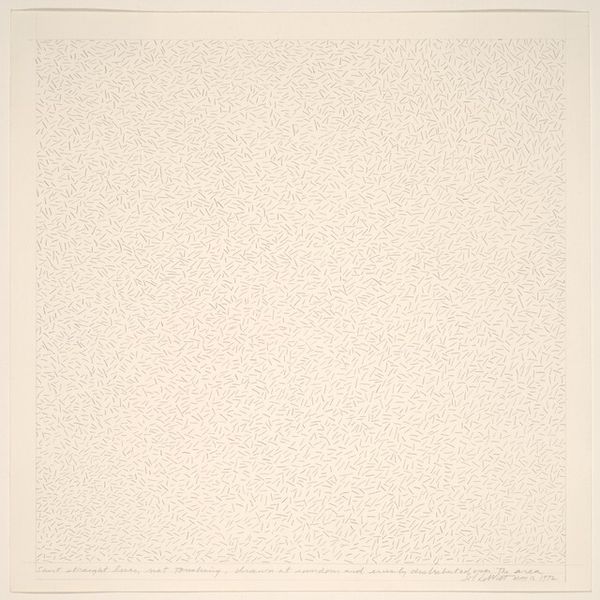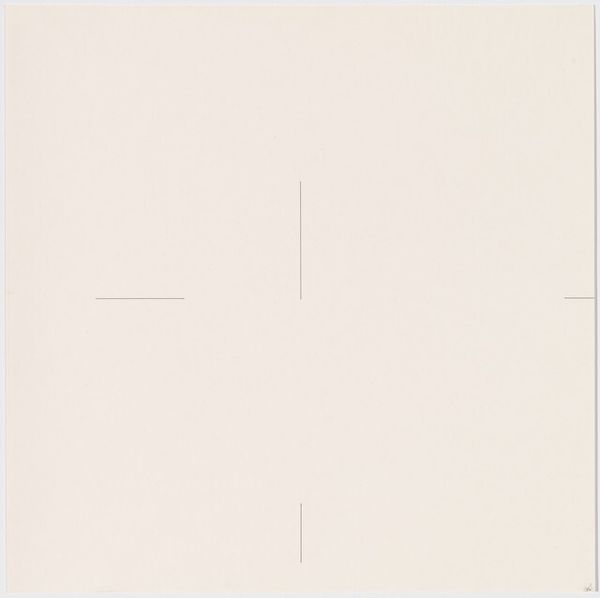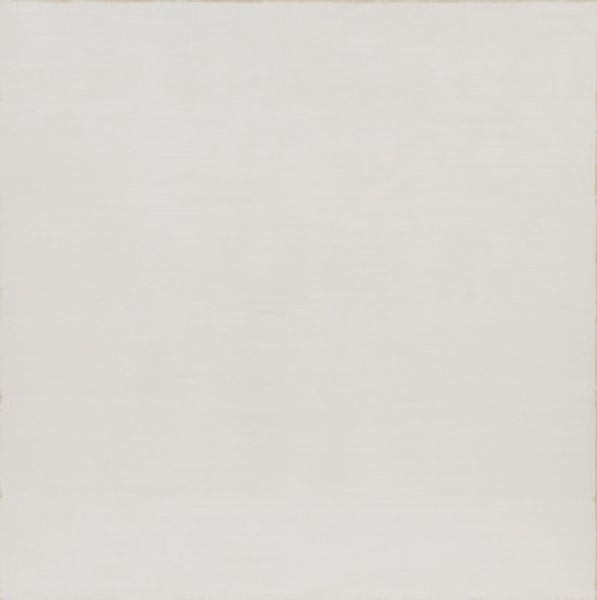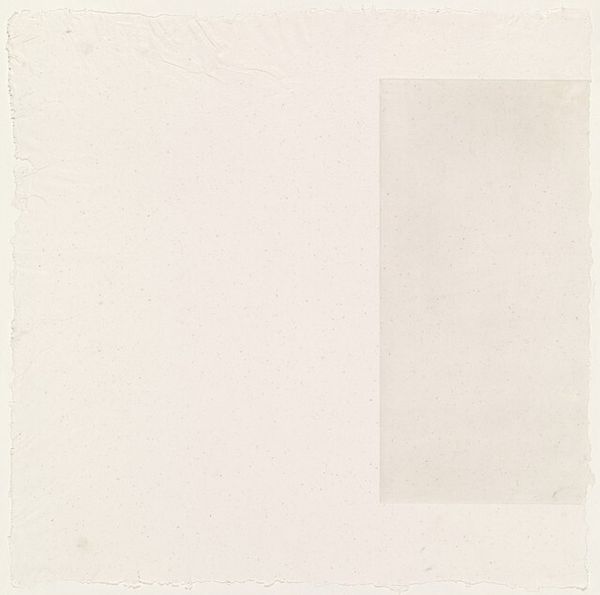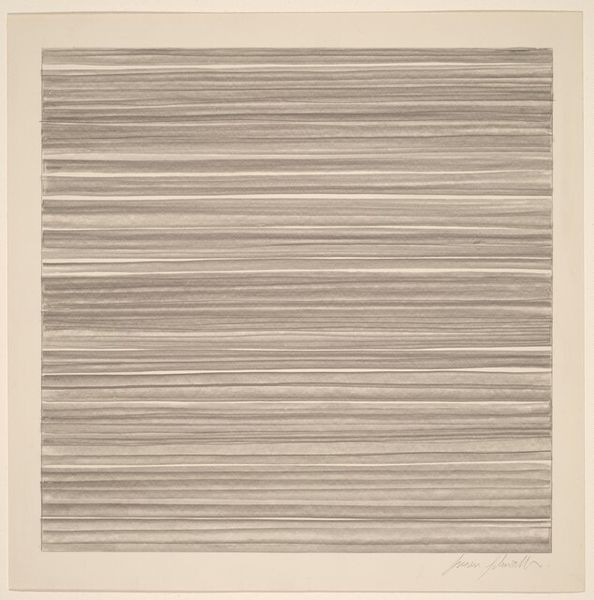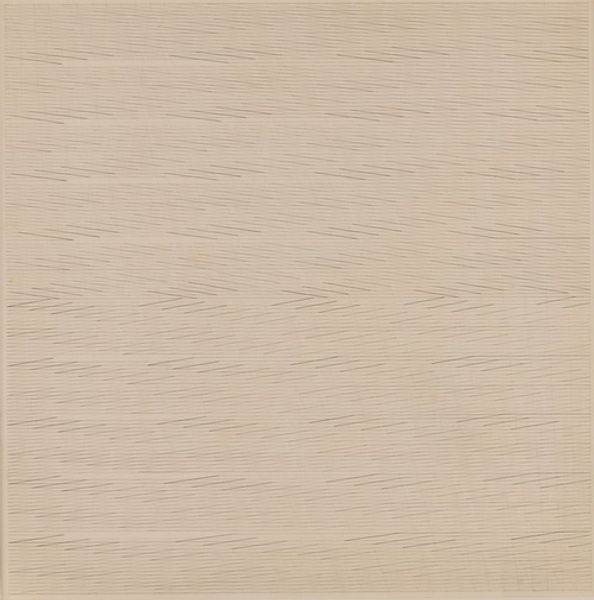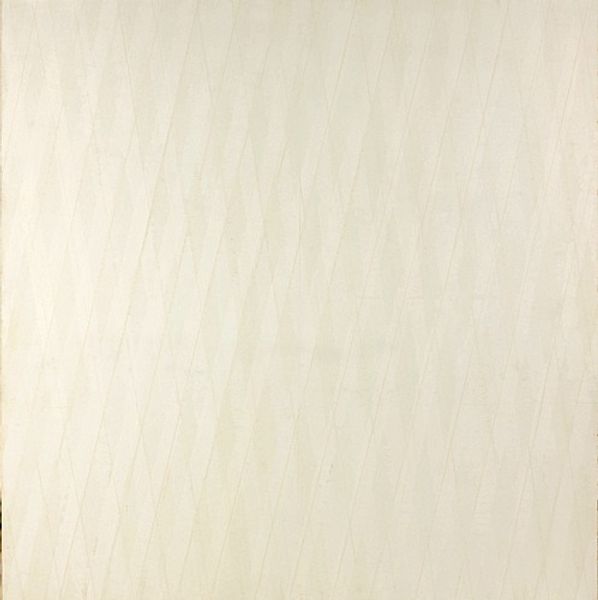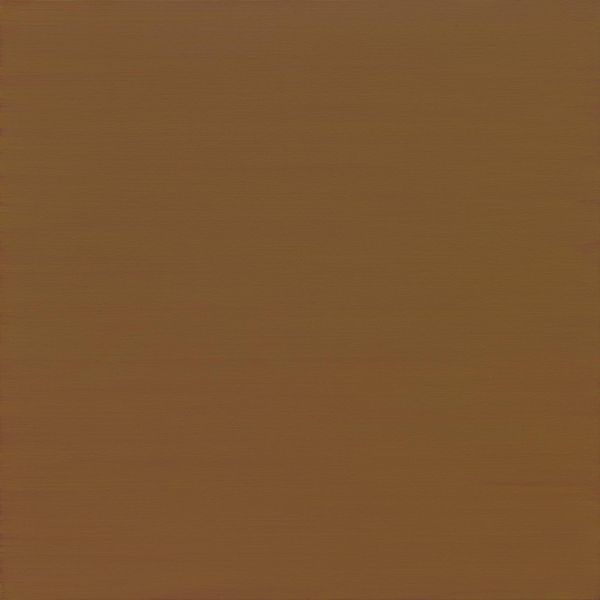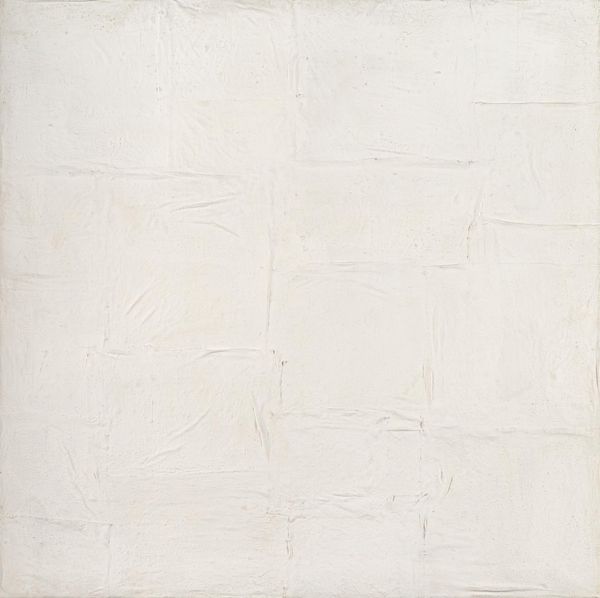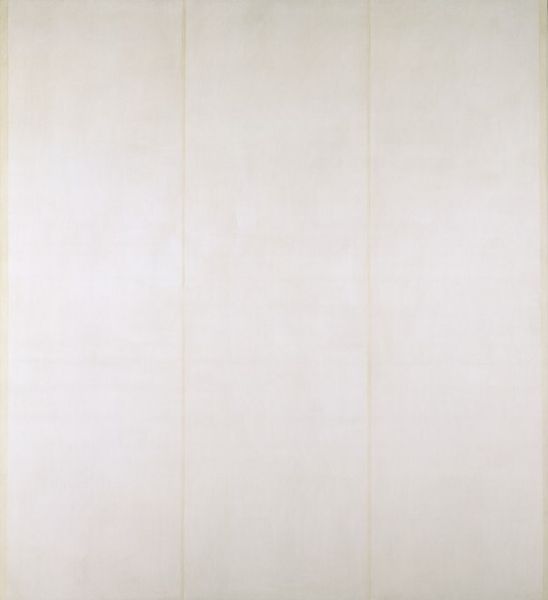
drawing
#
drawing
#
conceptual-art
#
minimalism
#
op art
#
postminimalism
#
geometric
#
abstraction
#
line
Dimensions: overall: 45.8 x 45.8 cm (18 1/16 x 18 1/16 in.)
Copyright: National Gallery of Art: CC0 1.0
Curator: This is an untitled drawing by Sol LeWitt from 1971. The piece consists primarily of horizontal lines. Editor: At first glance, it's incredibly subtle, almost meditative. The uniformity is quite striking, a quiet study in repetition and almost obsessive control. Curator: Right. LeWitt's Conceptualism valued the idea over the execution. While he did create some works himself, many were executed by others following his instructions. This raises questions about authorship and artistic labor. The work is meant to demystify the artistic process. Editor: The interplay of line and surface creates an optical effect. Your eye tends to oscillate between recognizing individual lines and grasping it as a single textural entity. How much does the final "product," in the sense of its execution, matter if the concept precedes it? Curator: That's central to LeWitt. The idea, the set of instructions, takes precedence. The work becomes a manifestation of a system. The lines themselves, the material, become almost secondary, tools used to carry out the core idea, much like any job's requirements and output in a factory, where only perfection of task is valid. Editor: Yet, there's an undeniable aesthetic dimension to these lines. Their imperfect regularity and texture are not merely functional. Their proximity and faint quality give depth that's somewhat hypnotic, a vibration across the surface. Curator: Consider the means of production: graphite or ink on paper, likely, replicated numerous times following the systematic instructions LeWitt established. Where is the 'artistic genius' in that? LeWitt challenges this concept of inherent authorship. The value lies in the design, its potential for reproducibility, the social framework supporting production. Editor: And there is something almost romantic, for me, about this rigorous methodology. While seemingly austere and rigid, it reveals that minimalism allows an attentive artist and viewer to look at nuance, to perceive subtlety within what appears to be purely systematized uniformity. Curator: Precisely. It reframes how we consume art, asking us to think beyond surface beauty, beyond traditional skill. It forces us to acknowledge the labor, both physical and intellectual, involved. Editor: Well, seeing it through this lens definitely opens up a much richer dialogue. Curator: Absolutely. Conceptual art demands an engagement with the systems of artistic production, reception, and value creation.
Comments
No comments
Be the first to comment and join the conversation on the ultimate creative platform.
